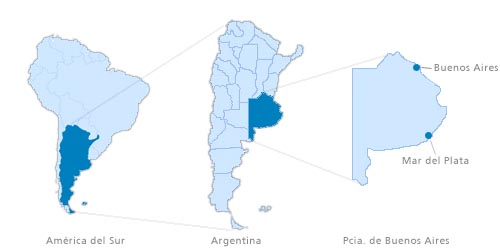nzqa expiring unit standard 26849 version 2 page 5 of 5 powerpluswatermarkobject110070048 title describe and analyse service d
NZQA Expiring unit standard
26849 version 2
Page 5 of 5
PowerPlusWaterMarkObject110070048
Title
Describe and analyse service delivery models or approaches, and manage
service plans in a health-related organisation
Level
5
Credits
10
Purpose
People credited with this unit standard are able to: describe and
analyse service delivery models or approaches; describe the
application of a service delivery model or approach; develop service
plans for consumers; manage the implementation of service plans for
consumers; and review and update service plans for consumers; in a
health-related organisation.
Classification
Health, Disability, and Aged Support > Health and Disability
Principles in Practice
Available grade
Achieved
Guidance Information
1 Legislation and codes relevant to this unit standard include:
Health and Disability Commissioner Act 1994;
Health and Disability Commissioner (Code of Health and Disability
Services Consumers’ Rights) Regulations 1996 (the Code of Rights);
Health and Disability Services (Safety) Act 2001;
Health and Safety in Employment Act 1992;
Human Rights Act 1993;
Privacy Act 1993.
2 New Zealand Standards relevant to this unit standard include:
NZS 8134.0:2008 Health and disability services Standards – Health and
disability services (general) Standard;
NZS 8134.1:2008 Health and disability services Standards – Health and
disability services (core) Standards.
3 Primary references
The following texts and web-based references provide information on
the service delivery models and approaches cited in this unit
standard:
Eden Alternative
http://www.edenalt.org/.
Palliative Care
Age Concern. (2009). Palliative care. Retrieved 26 April, 2011, from
http://www.ageconcern.org.nz/health/health-help/palliative-care
(includes link to the Ministry of Health Palliative Care strategy).
bpacnz Ltd (Best Practice Advocacy Centre). (2006). Providing
palliative care to Māori. Retrieved 26 April, 2011, from
http://www.bpac.org.nz/resources/campaign/palliative/palliative_maori.asp.
Canterbury District Health Board. (2009). Palliative care guidelines.
Christchurch: Author, available at
http://www.cdhb.govt.nz/documents/palliative-care-manual/palliative-care/Pal_Care_Guidelines.pdf.
World Health Organization. (n.d.). WHO Definition of Palliative Care.
Retrieved 26 April, 2011, from
http://www.who.int/cancer/palliative/definition/en/.
Rehabilitation
Hammell, K. W. (2006). Perspectives on disability and rehabilitation:
Contesting assumptions, challenging practice. Edinburgh: Churchill
Livingstone, available at http://ebooksfreedownload.org/ (search for
Hammell).
Restorative Approach
Hegner, B. R., Acello, B., & Caldwell, E. (2008). Nursing assistant: A
nursing process approach (10th ed.). Clifton Park, NY.: Thomson Delmar
Learning.
Strengths-based Approach
McCashen, W. (2005).The strengths approach: A strengths-based resource
for sharing power and creating change. Bendigo, Vic.: St Luke's
Innovative Resources.
Supported Independent Living
MacArthur, J. (June 2003). Support of daily living for adults with an
intellectual disability: Review of the literature prepared for the
National Advisory Committee on Health and Disability to inform its
project on services for adults with an intellectual disability.
Wellington: National Advisory Committee on Health and Disability,
available at http://www.donaldbeasley.org.nz/publications.htm.
Ministry of Health; ACC. (2008). Home and community support services:
Implementation guide 2008. Wellington: Author, available at
http://www.acc.co.nz/PRD_EXT_CSMP/groups/external_providers/documents/internet/prd_ctrb095280.pdf.
Paradigm. (n.d.). History of supported living. Birkenhead, UK: Author,
available at http://www.paradigm-uk.org/Resources/o/u/0/History of
Supported Living.pdf. (Note that this refers to the United Kingdom
history of supported living).
Paradigm. (n.d.). Person centred approaches – A checklist for
providers. Birkenhead, UK: Author, available at
http://www.paradigm-uk.org/articles/Person_Centred_Approaches_Provider_Checklist/224/86.aspx.
supportoptions.co.nz. (n.d.). Supported independent living. Retrieved
26 April, 2011, from
http://www.supportoptions.co.nz/support/services.aspx.
4 Definitions
Candidate refers to the person seeking credit for this unit standard.
Consumer is defined in the Code of Rights and the Health and
Disability Commissioner Act 1994 in the following ways:
‘Consumer means a health consumer or a disability services consumer;
and, for the purposes of Rights 5, 6, 7(1), 7(7) to 7(10), and 10,
includes a person entitled to give consent on behalf of that consumer’
– Code of Rights, Regulation 4.
'Disability services consumer means any person with a disability that
–
(a) Reduces that person's ability to function independently; and
(b) Means that the person is likely to need support for an indefinite
period.' – Health and Disability Commissioner Act 1994, s. 2.
'Health consumer includes any person on or in respect of whom any
health care procedure is carried out' – Health and Disability
Commissioner Act 1994, s. 2. Consumers may also be known as patients,
clients, or tūroro, in particular contexts and settings.
Health and wellbeing refers to a holistic concept of a consumer’s
mental, emotional, physical, spiritual, and social wellbeing.
Manage service plans refers to all aspects of planning, overseeing,
and monitoring service plans, and of coordinating and directing those
people within an organisation who have a designated role in service
plan implementation.
Organisation’s policies and procedures are the policies and procedures
of the employing organisation of the candidate and include ethical
codes, standards, and other organisational requirements.
Others refers to any people who have relationships or interactions
with a consumer, including but not limited to support workers,
clinicians, family/whānau, friends, members of specialist agencies,
community volunteers.
Providers means disability services providers and health care
providers, as defined by the Health and Disability Commissioner Act
1994, ss.2 and 3.
Service delivery models or approaches refers to philosophies of
consumer care that may be applied within an aged care, health, or
disability setting. A service delivery model or approach provides an
over-arching set of underlying principles, aims and objectives,
operational parameters, and reviewable outcomes which direct the
nature of consumer care and the manner in which it is provided.
Service plan is a generic term that covers individual or group plans
(which may also be referred to by other names such as care plans) that
are developed by service providers for people receiving support (and
may include their family/whānau as appropriate).
Service provision in the context of this unit standard refers to the
type and standard of service offered by a provider, including but not
limited to – clinical, social or cultural service, rehabilitation,
therapeutic interventions, counselling, crisis management.
5 This unit standard cannot be assessed against in a simulated
environment. For assessment, candidates must demonstrate competence in
the workplace through paid or unpaid employment, or in placements in a
service provider workplace negotiated by an education provider.
Outcomes and performance criteria
Outcome 1
Describe and analyse service delivery models or approaches in a
health-related organisation.
Range service delivery models or approaches include – Eden
Alternative, palliative care, rehabilitation, restorative approach,
strengths-based approach, supported independent living;
evidence is required of three of the above service delivery models or
approaches.
Performance criteria
1.
Service delivery models or approaches are described in terms of
their underlying philosophy and application to consumer care in
accordance with the primary references.
2.
The key features of each service delivery model or approach are
analysed in terms of how they shape service provision in a
health-related organisation.
1.3 The key features of each service delivery model or approach are
compared and contrasted in terms of their strengths and limitations.
Range evidence is required of a minimum of three key features for each
service delivery model or approach.
Outcome 2
Describe the application of a service delivery model or approach in a
health-related organisation.
Range service delivery models or approaches include – Eden
Alternative, palliative care, rehabilitation, restorative approach,
strengths-based approach, supported independent living;
evidence is required of one of the above service delivery models or
approaches.
Performance criteria
2.1 The service delivery model or approach is described in terms of
its capacity to align with the organisation's vision, mission, and
philosophy.
2.2 The service delivery model or approach is described in terms of
its capacity to meet the requirements of government strategies,
contracts for services, or service specifications relating to aged
care, health, or disability.
Range evidence is required of a minimum of any two government
strategies, contracts for services, or service specifications.
Outcome 3
Develop service plans for consumers in a health-related organisation.
Range evidence is required of two service plans for two different
consumers.
Performance criteria
3.1 Development of service plans for consumers is in collaboration
with the consumer and others who support the consumer, and in
accordance with the organisation’s policies and procedures.
3.2 Service plans for consumers meet the specifications of the
organisation’s contracts for services, and align with service delivery
models or approaches.
3.3 Service plans promote consumers’ health and wellbeing in
accordance with the organisation's policies and procedures.
3.4 Service plans for consumers are within the budgetary and resource
allocations of the health-related organisation.
3.5 Service plans for consumers include goals developed in
collaboration with the consumer that are specific, measureable,
achievable, and realistic.
Outcome 4
Manage the implementation of service plans for consumers in a
health-related organisation.
Range evidence is required of two service plans for two different
consumers.
Performance criteria
4.1 Management of the implementation of service plans is in accordance
with the organisation's policies and procedures.
Outcome 5
Review and update service plans for consumers in a health-related
organisation.
Range evidence is required of two service plans for two different
consumers.
Performance criteria
5.1 Review of service plans is in terms of analysis of the level of
achievement towards specified goals.
5.2 Review of service plans incorporates feedback from consumers and
others, in accordance with the organisation’s policies and procedures.
5.3 Updating of service plans is in accordance with the outcomes of
service plan reviews and the organisation’s policies and procedures.
This unit standard is expiring. Assessment against the standard must
take place by the last date for assessment set out below.
Status information and last date for assessment for superseded
versions
Process
Version
Date
Last Date for Assessment
Registration
1
17 June 2011
31 December 2021
Review
2
24 January 2019
31 December 2021
Consent and Moderation Requirements (CMR) reference
0024
This CMR can be accessed at
http://www.nzqa.govt.nz/framework/search/index.do.
Community Support Services ITO
SSB Code 101814
Ó New Zealand Qualifications Authority 2021
 POWSTANIE STYCZNIOWE POWSTANIE STYCZNIOWE WOJNA POLSKOROSYJSKA ARTUR GROTTGER BITWA
POWSTANIE STYCZNIOWE POWSTANIE STYCZNIOWE WOJNA POLSKOROSYJSKA ARTUR GROTTGER BITWA APSTIPRINĀTA AR RĪGAS DOMES 14032017 LĒMUMU NR4971 RĪGAS PAŠVALDĪBAS
APSTIPRINĀTA AR RĪGAS DOMES 14032017 LĒMUMU NR4971 RĪGAS PAŠVALDĪBAS SIMBOLOS Y UBICACIÓN DEL PARAGUAY BANDERA DEL PARAGUAY ESCUDO
SIMBOLOS Y UBICACIÓN DEL PARAGUAY BANDERA DEL PARAGUAY ESCUDO APRUEBAN “DISPOSICIONES PARA EVITAR LA PROPAGACIÓN DEL CORONAVIRUS (COVID19)
APRUEBAN “DISPOSICIONES PARA EVITAR LA PROPAGACIÓN DEL CORONAVIRUS (COVID19) TUMORES RENALES – TUMOR DE WILMS TUMORES RENALES –
TUMORES RENALES – TUMOR DE WILMS TUMORES RENALES – EXPERIENCIA PILOTO DE COMPOSTAJE DE BARROS PRIMARIOS CLOACALES DE
EXPERIENCIA PILOTO DE COMPOSTAJE DE BARROS PRIMARIOS CLOACALES DE HERMANDAD DE LOS ESTUDIANTES UNIVERSIDAD CATÓLICA DE ÁVILA NOMBRE
HERMANDAD DE LOS ESTUDIANTES UNIVERSIDAD CATÓLICA DE ÁVILA NOMBRE CRAVEN ARMS MEDICAL PRACTICE Q1 WHAT IS YOUR GENDER?
CRAVEN ARMS MEDICAL PRACTICE Q1 WHAT IS YOUR GENDER?